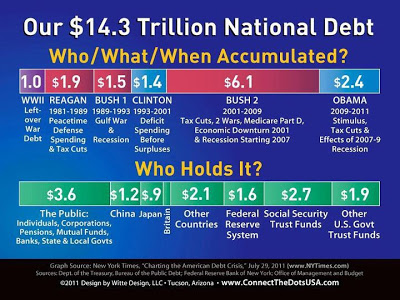The Rag Blog
Thorne Webb Dreyer, Editor

SEARCH
RECENT POSTS
MELISSA HIELD / HISTORY / Project Tejas 1985
March 25, 2025
ALICE EMBREE / THE RAG AND THE RETROGRADE / History Repeats Itself
February 14, 2025
RICHARD CROXDALE | REMEMBRANCE | Doyle Niemann
June 2, 2024
ARCHIVES



















Here is a link that appears to have slightly more recent numbers and more detail about who holds the public treasury bond debt.
http://finance.yahoo.com/news/biggest-holders-of-us-gov-t-debt.html
If there is a category of spending that the ‘bankerocracy’ doesn’t wish to participate in, but is still considered necessary to stabilize the overall economic system, it tends to get added to the public tab as public treasury debt (sucker debt?) that we see here, backed up by future taxes as collateral.
This public category of obligation is in contrast with unregulated private credit, which of course must always anticipate a profit in the opinion of the lenders. A lot of what has been going on in the last few years is to try to backstop poorly managed private banking debt by shifting the payback obligation over to the taxpayers via treasury debt.